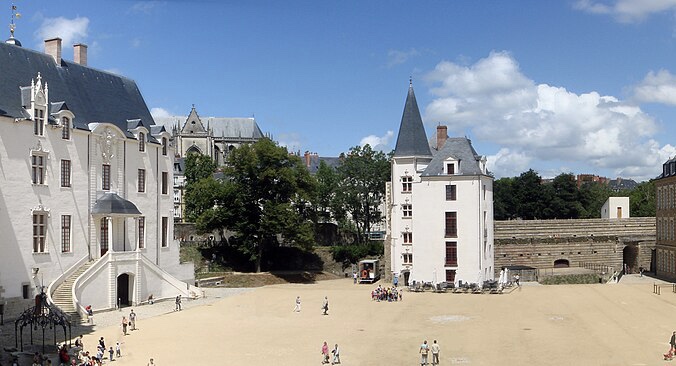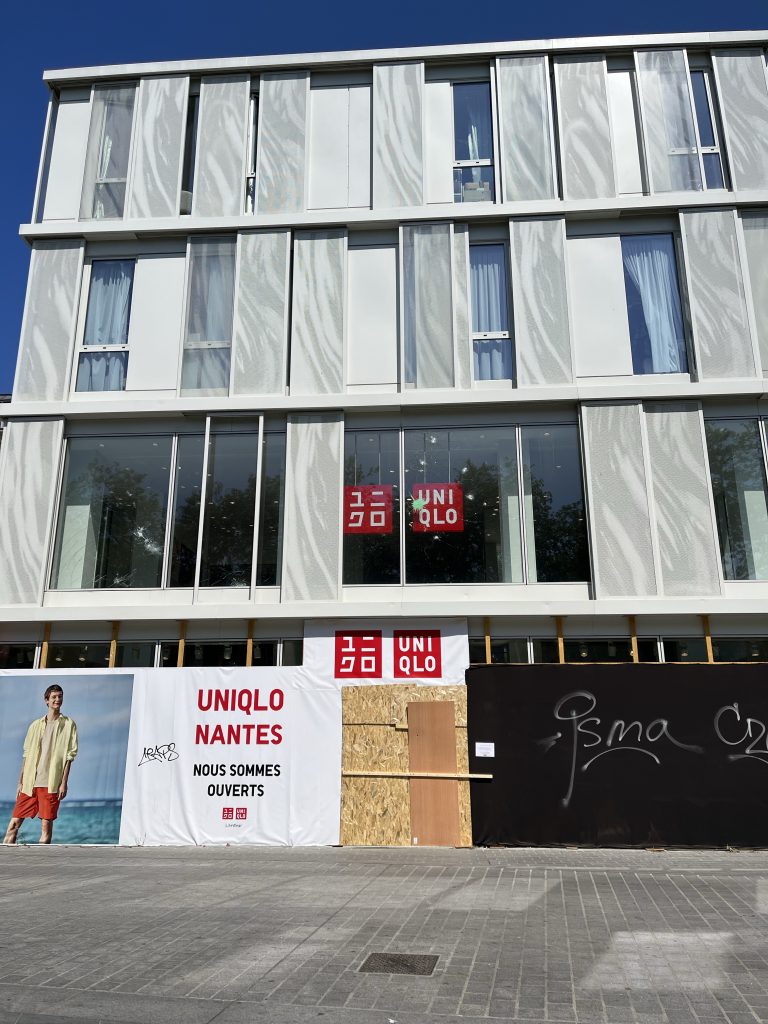
Nantes
I’m in Nantes, where I’ll be staying for three nights, and I’ve been figuring out places to visit while here. I’ve a view of the Château des ducs de Bretagne from my window, pictured above, which also houses the Nantes History Museum, so as a two in one it’s straight on my list.
I’m not sure if they’re house martins, as I’d seen around Amboise, or swallows or swifts but there are huge numbers of whatever they are darting around and in and out of the castle.
It made me think again of slavery, as I’d done in Amboise, and the link between them and we humans to Africa i.e. they’ve wintered there for centuries but our past relationship with the continent would today be considered criminal. Twelve and a half million crimes to be precise, which is the number of men, women and children captured and sold into slavery.
France was the third largest of the European slave-trading nations after Portugal and England, shipping well over a million, and Nantes did the largest share: over half a million according to records.
Nantes has a Memorial to the Abolition of Slavery which leads down to an enclosed space made of weathered wood walls, not unlike the hulls of the ships where slaves were chained for the voyage across the Atlantic, which apparently renders visitors silent. I’ve read good reviews if you can even allow such an adjective to come close to something so abhorrent, so I decided to go there too.
I spent my first evening walking around the old part of the city, the medieval quarter as it’s signposted. Although run down in parts, there is ample evidence of its past and present prosperity in its many fine buildings, although some are less welcome than others as illustrated below.

On Labour Day, the first of May, thousands of people across France took to the streets to vent their anger at Macron’s pension reforms, including many in Nantes. Police here used tear gas after protesters hurled projectiles and smashed windows to several buildings, including Uniqlo. Several similarly damaged buildings bore spray-painted messages, such as ‘Hôpitaux et opéra au prolétariat – la santé et la culture ne sont pas un luxe!’
Crime appears to be on the rise in Nantes. According to recent interior ministry figures the city was sixth nationwide last year in relation to theft with a weapon, above Paris.
Some have even dubbed the city ‘Little Marseille’, known for its drug-related violence and gangland shootings. And a Numbeo online survey of international travellers’ perceptions of crime and security saw it placed fifth in Europe, just under Marseille. The top three cities were the English cities of Bradford, Coventry and Birmingham, the city of my birth.
At one point during my stroll on a busy street I had a brush with what I assume to have been a crime in the making. I was suddenly accompanied by a man who had his arm round my shoulders and was saying something I didn’t understand. He was smiling, beckoning me towards an empty side street where several dodgy-looking accomplices appeared to be waiting. There was no force and I simply walked away into the crowd but I’ve since become aware of similarly suspicious-looking groups of young men in a few other places and now avoid them.
But my overriding impression of the city so far is a positive one. It’s buzzing with a laid-back feel and it’s a delight to see so many young people cycling around and gathering in cafes and bars, sitting in groups under the shade of trees in leafy parks, all kissing both cheeks of the friends when they meet. It’s nothing like Birmingham.